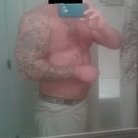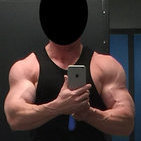Leaderboard
Popular Content
Showing content with the highest reputation on 09/13/2018 in all areas
-
David Johnson (not his real name) was one of the premier bodybuilders of the mid-to-late 1960s. Although he did use drugs, such as anabolic steroids, to win many of his titles, later in his career he disavowed the use of most drugs with one notable exception. Johnson had a preworkout ritual that he claimed allowed him to train more intensely and concentrate more effectively throughout his training session. What was his secret? The enigmatic root of his preworkout ritual became evident one day in the back room of a popular Southern California bodybuilding gym. This particular gym had a sauna that was never used, located in the back of the men's locker room. It was the perfect place to engage in surreptitious behavior. What Johnson couldn't conceal, however, was the pungent marijuana fumes. Johnson smoked marijuana in that room. And he didn't just puff on one "joint," or marijuana cigarette, either. No, Johnson regularly engaged in a marijuana trip, losing his thoughts in the wispy smoke that rose slowly toward the ceiling in his secret alcove. He would emerge after an hour or so and head directly to the gym floor, working out with no apparent ill effects. Although marijuana is an illegal drug, many athletes, not just bodybuilders, regularly smoke "weed" as a means of relaxation and mind expansion. A long-held tenet of the drug culture is that marijuana emphasizes the mood you're already in. Thus, if you feel good, you'll feel even better after the intoxicating effects of THC, the active component of pot, does its job on your brain. While marijuana has always had a relatively innocuous reputation compared to other mind drugs, such as cocaine and heroin, few people are aware of its true effects on the body. Entire volumes have been written documenting the physiological effects of marijuana, but many people are still confused. Active Ingredients Known to botanists as Cannabis sativa, more than 100 species of the cannabis plant, also known as marijuana and hemp, grow wild throughout the world in temperate climates. Analysis of the plant yields 460 compounds, of which 60 are cannabinoids, but the only cannabinoid known to have psychoactive effects is delta-9-THC. That's the ingredient that makes you feel high. Not long ago scientists discovered nerve receptors in the brain that are specifically affected by THC, which suggests that the body produces its own natural form of THC. Different parts of the marijuana plant have different THC contents. The bracts, flowers and leaves contain the most, while the stems, seeds and roots contain lesser amounts. The most concentrated form of all, however, is hash oil, which is the distilled liquid resin of the female marijuana plant. Street pot has gradually increased in potency over the years, and current versions are thought to be five to 10 times more potent than the stuff people used to "tune in and turn on" in the '60s. When inhaled, as from a "reefer, or joint, THC is rapidly absorbed. Studies show the systemic bio-availability of THC following smoking is about 18 percent, with heavier users absorbing more than casual smokers. That compares with the oral uptake, from, say, a pill, of only 6 percent. The peak effects of the drug occur within 20 to 30 minutes and last for two to four hours. THC circulates through the body and, being highly fat-soluble, easily enters the brain. About 80 to 90 percent of an intravenous dose of THC is excreted from the body in five days, although metabolites remain detectable in urine for 10 days after a single dose and more than 20 days after chronic use. Due to its proclivity for storage in fatty tissues of the body, in some cases THC may take up to a month to be eliminated. How marijuana affects a person varies from individual to individual. A recent study funded by the United States National Institute on Drug Abuse involving identical twins found that the likelihood that you'll find pot enjoyable has a genetic basis. What's more, the effects can vary in the same person. A 1970 medical review of marijuana described the typical effects: "Typically, the user feels a series of jittery 'rushes' soon after inhaling. A sense of relaxation and well-being follows. There is awareness of being intoxicated not unlike that produced by alcohol. The user becomes acutely conscious of certain stimuli to the extent that his whole attention is focused, immersed and at times lost with the sensory experience. In this state jokes are funnier, misfortunes more poignant and human relations more deeply perceived. "The appreciation of food, sex and, in particular, music is intensified. The user may believe that his thoughts are unusually profound (an impression rarely shared by observers). Paranoid thoughts and feelings of depersonalization have been reported by subjects and observed in the laboratory. Visual imagery is increased, and in larger doses colors may shimmer and visual distortions occur. There are feelings of changed body proportion. Among the most striking perceptual changes is the subjective slowing of time." At least two effects rapidly occur in most people who smoke marijuana: The eyes redden, and the heart beats faster. This increased load on the heart tends to impede athletic performance, as shown in some studies. This occurs because, while pot speeds the heart, the cardiac stroke volume, or amount of blood pumped by the heart, decreases. One study showed that in men cycling against increasing workloads, pot decreased exercise performance. Another study showed that when 161 men and women took THC, they experienced a general drop in standing steadiness, simple and complex reaction times, and other athletic skills. Contrary to the experience of the bodybuilder described above, if anything, pot decreases training concentration and focus, an effect so potent that it can't even be overcome with concomitant amphetamine usage. A crucial question from a bodybuilding perspective is, How does smoking pot affect anabolic hormones, such as testosterone? Marijuana and Testosterone A brief report concerning the appearance in gynecomastia in three male pot smokers published in 1972 sparked a number of subsequent studies that examined the relationship between marijuana use and testosterone levels. Gynecomastia, or "male breasts," however, is not a common side effect encountered with marijuana use. Instead, the condition is usually the result of an imbalance between testosterone and estrogen in men, with something causing an increase in the latter. Since marijuana has no estrogenic activity, it isn't likely to cause this condition. Even so, animal studies clearly point to an inhibitory effect of marijuana on both testosterone and luteinizing hormone (LH) production. LH is the pituitary hormone that governs endogenous testosterone synthesis in men. When it comes to humans, though, things are far less clear. Most studies that have examined human marijuana use haven't shown any significant effect on testosterone levels in normal men. A 1983 study, however, did find depressed testosterone levels after subjects smoked just one joint, with the effect lasting 24 hours. A 1984 study found that pot not only inhibited testosterone but also lowered prolactin, thyroid and growth hormone. It did that by altering the expression of brain substances that govern hormone release. Nevertheless, a 1989 study gave 17 male volunteers both high and low doses of THC and then tested their hormonal responses. The results showed no hormonal or immune parameters affected by either a high or low dose of THC. Notably, both testosterone and cortisol were examined, indicating that pot doesn't produce catabolic effects in muscle through increased cortisol release. Based on the majority of studies that have looked at the effects of pot on testosterone levels, it appears that the drug has little or no effect on this hormone in humans. One study that examined Jamaican pot smokers, however, did find a significant decrease in active thyroid hormone in the blood, although the men showed no apparent thyroid dysfunction. Significantly, the men also showed normal testosterone levels despite smoking an average of seven to eight joints a day. Other Health Effects of Marijuana The recent passage of Proposition 215 in California and Proposition 200 in Arizona, both of which allow use of marijuana under medical supervision, has brought public attention to the health benefits (or lack thereof) of marijuana. This prompted the National Institutes of Health to convene a committee to study the medical benefits of pot. The committee looked at marijuana's effects on at least three medical conditions: glaucoma; wasting diseases, such as those occurring with HIV infection; and the nausea common with cancer chemotherapy. It concluded that more study is needed to determine the effectiveness of using pot to treat those and other disease states. What's interesting here is that legally, marijuana is classified as a schedule 1 drug under the Controlled Substances Act. That means it has no medical value and may be addictive. Yet in 1985 the Food and Drug Administration approved a synthetic version of THC called dronabinol (trade name Marinol) as a schedule 2 drug used to treat the nausea and vomiting associated with chemotherapy. In 1992 the FDA also approved Marinol for use in treating the wasting syndrome associated with AIDS. Marijuana, or more specifically THC, does affect many body systems. Here's a brief review of its effects: Immune system - Several test-tube studies of both animal and human tissue samples suggest that marijuana may inhibit cell-mediated immune functions. That has to do with the response of specialized immune cells called T cells that protect against viruses and cancers. Other studies on this aspect, however, suggest that any immune dysfunction induced by marijuana is transitory. In addition, the immune problem caused by marijuana isn't sufficient to overcome other immune systems of the body. This is still a debatable issue, though, as evidenced by a 1990 study published in the National Cancer Institute's Cancer Weekly. That study found THC suppresses the normal growth of white blood cells and thus may impair immunity in some people. Chromosome damage - Some studies show that THC may cause chromosome damage, leading to things like birth defects. Other studies dispute this, however, with the result that most scientists studying this issue feel that any chromosome damage caused by marijuana use is insignificant. Nevertheless, pregnant women are advised to avoid using any form of the drug to prevent any possibility of birth defects. Mental reaction - As noted earlier, taken in excess, marijuana can induce such symptoms as panic reactions, paranoia and mania. When studies are produced to prove the concept of "reefer madness," however, it turns out that in most cases people experiencing adverse mental problems after using marijuana had preexisting mental problems. Other studies show that marijuana does not predispose people to violence. A controversial topic related to marijuana use among younger people is its effects on memory and learning. This is also related to the increased potency of marijuana in recent years. For example, in a study that looked at short- and long-term memory functions in both pot-using and abstaining teenagers, the pot users showed defects in short-term memory that would have a negative effect on learning. A 1996 study looked at the mental effects of marijuana in college students. The subjects included 65 heavy and 64 light pot users who had smoked it for at least two years. The results showed that heavy users had trouble paying attention and performing mental tasks even after a day of not smoking. In an editorial that accompanied the study, however, another researcher noted, "The few reports of cognitive effects of marijuana lingering on the day after smoking have not proven reliably reproducible even by the original researchers." More problematic are so-called additives that may be found in pot. Sources of contamination can include insects, fungi and in Mexican pot a herbicide called paraquat that can cause lung damage. A 1989 report in the journal Bioscience found that pot grown in Hawaii (called "pakalolo") was high in the toxic metal mercury. Ingestion of mercury can lead to such brain defects as forgetfulness, anxiety and paranoia. Oral absorption of mercury from food sources, such as fish, is only 7 to 10 percent as efficient as that absorbed from the lungs, and the body retains only 7 percent of ingested mercury. That's in contrast to the 85 percent absorption of mercury vapors from smoking. It takes about three months for mercury to clear body tissues once absorbed, although the nutrients vitamin C and selenium block mercury absorption and detoxify it. A so-called amotivational syndrome is closely associated with pot use. In simple terms, that means regular pot users get so lazy, they don't want to do anything except smoke. Once again, in many cases a preexisting mental depression causes some people to turn to pot for relief. Studies conducted among workers in Costa Rica and Jamaica failed to find any apathy or laziness even among heavy cannabis users. Marijuana, contrary to earlier reports, does not appear to cause brain damage. Although it's been accused of causing brain atrophy, or shrinking of the brain, newer studies on the effects of pot in even heavy users failed to find this effect. Lung function - Studies that looked at the effects of marijuana show paradoxical effects. Thus, some studies show that the drug dilates breathing passages in the lungs, while others point to a significant degree of airway obstruction. Smoking pot yields more tar than cigarettes, and a 1988 University of California at Los Angeles study found that smoking pot releases five times as much carbon monoxide into the blood, which ties up oxygen, and three times more tar than cigarettes. Another study showed that three to four joints a day can produce as much lung damage as 20 tobacco cigarettes. According to Kasi Sridhar, M.D., a professor of medicine at the University of Miami, smoking marijuana is 100 to 200 times more likely to cause lung cancer than cigarettes. Sridhar believes the increasing incidence of lung cancer in younger people may be due to increased pot use. Other studies show that pot promotes bronchitis and impaired pulmonary defenses against infection. The tar produced from marijuana smoke contains 50 percent more carcinogens than unfiltered Kentucky tobacco. The fact that pot smokers inhale the smoke 40 percent deeper than cigarette smokers (except, of course, President Clinton) adds to the problem. One study found that smoking just one joint diminished vital capacity in a manner comparable to that produced by smoking 16 tobacco cigarettes. If all this still doesn't convince you that its use isn't so innocuous, how about marijuana as a fat stimulator? Pot has long been known to cause a peculiar sensation known as "the munchies," in which you have an insatiable desire for junk food after smoking, and it turns out the effect isn't just folklore. A study done at the Johns Hopkins School of Medicine looked at the appetite effects of marijuana on six men for 13 days. On some days the men smoked two joints in the morning and another two in the afternoon. On other days they smoked placebo joints, which didn't contain THC. The men ate three meals a day, but also had unlimited access to candy bars, potato chips, soda and other junk foods. On the days the men smoked the genuine pot, they ate no additional food at meals but ate enough snacks to consume 40 percent more calories than they ate on placebo days. That led to a six-pound weight gain after 13 days, which was quickly lost when they ceased getting high. The men were also less active on pot days and thus also burned fewer calories. When you add it all up, even overlooking the fact that marijuana is an illegal drug, this weed has little or nothing to offer bodybuilders or anyone else seeking maximum health and fitness.2 points
-
This is a good and we all have seen these type of men at the gym.... This doesn't go for ALL men, but MANY fit into stereotypes that you can see at any time, at any gym, anywhere. I’ve put together a list of types of men to avoid at the gym. Enjoy! A popular question among women that workout is “what gym do you go to?” To men this question literally means what is the NAME and LOCATION of your gym, not - why did you join, how do you like it, does your ex go there, does your ex go there with his new girlfriend, is she ugly, can the Zumba teacher really dance and is her butt real or any other such additional details we women would deem a natural part of the conversation. "Putting all the stories together and we began to see a pattern among the men...Stereotypes" Once we move past what is superficial chit chat to us, but would probably make a man’s head explode, we get into the stories. Yes, the stories. Juicy, hilarious, I-had-to-change-gyms-stories. I call these Sex, Lies, and Rock Tape. If you are too young to get that reference, I feel sorry you because it is a damn good one. Every woman has a gym story. Of course some have more than others and well some are more scandalous than others. As stories were exchanged amid a lot of laughs and eye rolling, we noticed a pattern. Putting all the stories together and we began to see a pattern among the men. Stereotypes, if you will. Not all but many fit into stereotypes that you can see at any time, at any gym, anywhere. And now for benefit, I’ve put together a list of types of men to avoid at the gym, how to recognize them and how to avoid them in order to preserve your gym going experience as long as possible. Because let’s face it, it sucks to juggle your schedule or cancel your membership over some clown. Below I give you the Three Types of Guys to Avoid at the Gym 1. The Gym Diva This guy is the peacock of the weight room. There is not a reflective surface he does not like. He primps. He struts. He stares…a lot…mostly at himself. He is in relative good shape but probably not as good as he thinks he is. As the name implies, it is all about him and his pageantry. The world is his runway. Between his indifference to women and flamboyant gym gear, you question is sexual orientation. He is neither hetero nor homo, but asexual (like a starfish). What to look out for: Likes to cut t-shirts just enough to see show his man nipples. Keep an eye out for excessive and unnecessary stretching so that others may feast their eyes on his shaved areolas. Detailed in coordinating his workout OTD. Everything matches from his weight belt to ear buds, to head band to compression tights. When asked how many sets he has, he will hesitate then answer 5, which are more like 8, if you count the minute it takes to perform the exercise and the two it takes to look at in the mirror immediately afterward. “Damn, I’d do me if I weren’t me.” Yes, he is likely to talk dirty to himself and send nude photos to himself, as well. Usually works out alone unless it’s with a partner equally as narcissistic with matching nipple peek-a-boo t-shirts. Motto: “I’m sexy and I know it. How to Avoid Him You don’t need to. He is the center of his own universe. 2. The Stalking Dead This guy is relatively harmless. He is not a creeper. He is not a serial killer, unless you count how he will kill your workout mojo. He is generally polite and friendly and likes to talk, and talk, and talk…and talk. Did I mention he likes to talk? Don’t be fooled into thinking that a smile and hello will be enough. Ha, ha, no. Just as soon as you answer one question, he has 10 more already lined up. You being the polite person that you are go along, figuring that at the some point it has to end so you can both get back to working out. But it doesn’t end. It never EVER ends. You hope it was a onetime thing but nooo. You are now BFFs and you can’t even remember his name. Within days you are hearing about his old sports injuries, kidney stones or inflamed prostate. OK, I’m exaggerating, I don’t even know if prostates get inflamed but for the first time in your life you envy Hellen Keller or some other famous deaf person. Anyway, with this guy you are the deer on a lonely road and he is the Mac truck with the paralyzing headlights. What to look out for: If you feel a set of eyes burning holes in the back of your head that is him. He will invite himself to workout with you even if he was on his way out or not even working the same body part. Asks A LOT of questions. More interrogation than conversation. Your eyes may or may not glaze over, so be careful when operating heavy machinery. How to Avoid Him Ladies you must master that peripheral vision. Know your surroundings at all times. I always forget where I parked but I know the gym traps to avoid like a ninja. Chances are you feel him make his ascent so you either make a quick getaway or resume working out but this time with an angry face with lots heavy almost animalist breathing. But whatever you do, or else your dead in the water, DO NOT take out your headphones. “I just put my headphones back in and walk away.” That works in most cases but he is a tenacious breed. You must preempt any move. Adopt a buddy system like in your club days. Have an S.O.S. signal arranged between you and a friend to be used in times of rescue. 3. The Gym Douche This alpha male wannabe is the worst of the bunch. Due to a tremendous ego, and ridiculous overcompensation for insecurity he will throw anyone under the bus that threatens him. He is the king of the iron jungle and spends hours there holding court and preying on the female sex. He stares at you and every woman. He wants you to see him staring. Why? Because he is a man! With needs, with loins and a penis, it’s all for YOU and anyone else desperate enough to fall for his game. He is easy to spot as he loves to draw attention to himself. What to look out for: Tries to be your friend and warn you about shady people, but really he is shady person he is speaking of Will offer to explain why he has so many female “friends” even though you never asked Most of his female friends are strippers or bartenders Will openly talk negatively about other people especially other alpha males in the gym He is a personal trainer … “personal trainer” Likes to give himself titles like “I am the (fill in the blank) here.” Draws attention to himself either through obnoxious laughter, ogling, weight throwing or gorilla stampede about the gym. How to Avoid Him: You will know him because his gaze will make you feel like he wants to impregnate you. He fearlessly and shamelessly hit on you within seconds of hitting the gym. He may or may not get secret weekly updates to new female members. The best and only thing to do is be cold. His ego can’t handle it. The consequence will be he might talk about you behind your back, which he will anyway. Your choice is as to how. As a chick he hates or chick he is sleeping with. I am sure there are more types that can be added to this list but I’d like some feedback and support on who you think should be added to this list to protect fit woman of all kind....??2 points
-
I just got an order in today and there was a little freebie among the pile of Tren. New rep is great rep to deal with. Thank you BT ??2 points
-
New rep is super quick to reply back to emails and answer any questions. Order took less then 24 hrs to my door step.2 points
-
Test only is awsome and u will gain and look like champ if ur diet is on point I ran 14 weeks of T400 one injection per week and proviron 50mg/day just finished at the end of August ...felt amazing and achieved the look i wanted for summer lean and jacked seems like low doses r working for me which I like next will be 20 weeks of test300/week and primo 600mg/week2 points
-
The 7-day DNP fat loss plan:The 7-day DNP fat loss plan involves a moderate to high dosage of DNP for fat burning. The DNP fat loss plan involves a 7-day on, 7-day off approach with four distinct phases. Most athletes using DNP follow this type of cycle. The phases are as follows: Phase 1: The 3-day Carb-Depletion Phase.Phase 2: The 1-day Thyroxine (T3) Re-normalization Phase.Phase 3: The 14-day DNP Phase.Phase 4: The 2-day Post-DNP Phase.Phase 1. The 3-day Carb-depletion phasePhase One has a three-day duration and begins the four days preceding the ingestion of DNP. The purpose of this phase is to deplete muscle-glycogen content by restricting carbohydrates. This is achieved through a Ketogenic style diet.Kcals should be restricted to 10-12 times bodyweight in lbs. And carbohydrates should be restricted to less than 60g/day. Protein is consumed at 1 gram per pound of bodyweight or higher and the remaining dietary calories should come from fat.This phase lasts exactly 3 days, and will reduce muscle-glycogen levels so that the body is forced to rely on fat as fuel more readily when you start your DNP cycle.Phase 2 The 1-day Thyroxine (T3) Re-normalization PhaseThis is a new concept for DNP dieting. During the past three days, the athlete has restricted carbohydrates and as a direct consequence T4-T3 conversion is slowed down resulting in reduced T3 levels. This is bad for the DNP phase, as you need enough active T3 to last throughout the entire 7-day on DNP phase.Day four of the DNP cycle involves a mega-carbohydrate meal at mid-afternoon (4-6PM) designed to create a massive insulin spike and re-normalize T4-T3. This concept has been extrapolated from ketogenic diets and has been shown to dramatically increase serum concentrations of T3.Day 4 involves Keto eating until the Mega-carb meal. Then in the late afternoon, at least circa 250g of carbohydrates must be consumed to create an insulin spike. Any sugar (fructose, sucrose, maltose etc.) is fair game. Fructose in particular is good because it primarily re-fills liver glycogen which is directly involved in T4-T3 conversion. (Empty liver glycogen signals the thyroid to decrease T4-T3 conversion).As a side-note, a 250g carb-meal after three days of Keto dieting creates a more pronounced insulin spike than would a 250g carb-meal after three days of normal eating.Kcals during Phase 2 should be kept at 15X Bodyweight in lbs. Macro-nutrient break-downs can be calculated by the athlete. The only carb intake on day 4 should be the 250g carb-meal.Phase 3 The 14-Day DNP PhaseThe first two days of actual DNP consumption are the most important to follow correctly. During Days 1 and 2 of the actual DNP portion of the cycle, it must be determined if the athlete will have an allergic reaction to DNP.Day 1: 200 mg of DNP is ingestedDay 2: 200 mg of DNP is ingestedAt this point the dieter should be able to assess if an allergic reaction has occurred. A DNP-stimulated allergic reaction will lead to swelling in as little as 1 to 2 days time. Approximately 10% of athletes will have such a reaction. The unfortunate few who experience this type of a reaction must terminate the cycle immediately. Benadryl or Ketotifen (Anti-histamines) can be used to treat mild symptoms. Obviously a doctor should be consulted should the symptoms prove more severe.Day 3: Dieters making it to day 3 of the DNP phase have the option of increasing their dosage. The normal dosage for beginners is 400mg DNP/day. Even an amount this small should provide outstanding results. A word of caution. DO NOT TAKE MORE, if you are not experienced with DNP-use. More advanced users may chose to go higher based on past experience. The 400mg/day dosage is maintained from Day 3 through Day 9(Exactly 7 days). The last dose is taken on Day 9. Supplementation and Nutritional Protocol for a DNP cycle:1. An ECA stack is beneficial while on a DNP cycle as it as it acts as an anorectant. DNP raises Neuro-peptide Y levels in the brain, which is directly linked to increased hunger. Consuming 75-100mg total of ephedrine alkaloids/day should be sufficient to suppress appetite. PPA (Nor-ephedrine) should NOT be used as it causes lethargy when combined with DNP. 2. Anti-oxidants. Due to the DNP induced rapid combustion of fats, free-radical production skyrockets up-wards. To combat this, anti-oxidants must be used. Anti-oxidants are the single most important supplement to take on a DNP cycle.a) Fat-soluble Anti-O: Vitamin E: 1000mgs/day b) Water-soluble Anti-O: Vitamin ? 2-3g/dayc) Alpha Lipoic acid: 600-1000mgs/dayDual-anti-oxidant: BOTH fat & water-soluble actually re-cycles other anti-oxidants.3. Glycerol: Although optional, glycerol is often consumed at 15ml's 3X/day. Glycerol increases hydration for many athletes.No additional supplements are really required other than these three. All the rest you have read in various DNP articles are more for peace of mind than improved functionality. I consider them overkill.4. Water: Not a supplement, but an absolute necessity.DNP causes sweating and can be incredibly dehydrating. Dehydration is the NUMBER ONE cause of most DNP problems and deaths. Excessive dehydration results in over-heating. Dieters who do not replenish fluids properly while on a DNP cycle could die. The consensus among athletes is that at least two gallons of water must be consumed daily.5. EAT FRUIT while on your DNP cycle.Fruit for some reason has been found to greatly reduce the lethargy associated with a DNP cycle. It also has a high water content, therefore it helps to keep the dieter hydrated. Watermelon is an obvious recommendation.6. Dietary intake: There are several schools of thought on this matter, but sticking to the old standard always works.Kcals should be kept anywhere from 10-15X Bodyweight in lbs. Macro-nutrient break-downs should be kept at around 20% fat, 30% protein and 50% carbs. (Changing the ratios in favor of more carbs and protein w/ less fat will result in a more fat loss but nothing special. Also, remember that more carbohydrates means more heat.) Take for example the 220 lb (100 kg) bodybuilder. He would consume anywhere from 2200 to 3300Kcal /day (Depending on his appetite control).WHAT NOT TO DO on a DNP cycle.a) Do not under any circumstances consume alcohol or ANY type of diuretic while on a DNP cycle. Alcohol and diuretics will dehydrate you and can cause SERIOUS problems. b) Do not remain in a hot environment without replenishing fluid loss due to perspiration. This too can also cause SERIOUS problems. c) Do not begin with a high dosage of DNP if you are a novice. This is just asking for a trip to the ICU.The half-life of 2,4 Dinitrophenol is 36 hours. So, after 36 hours, there is only 50% of the DNP remaining in your system. Therefore, 72 hours later 25% remains. Then 12.5% remains after 108 hours. After 5 days (120 hours), there's roughly 9% of the DNP left in your body that you had on Day 9. This DNP concentration is low-enough to allow you to begin Phase 4 of the cycle -- the 2-day Post-DNP phase -- without compromising glycogen synthesis rates. Kcals during Days 10-14 should remain the same as during days 3-9.Phase 4: The 2 day Post DNP Phase.The whole purpose of this phase is to get muscle-glycogen levels back to normal. The Ketogenic carb-up can be used as a sort of template for this phase.After Phases two and three, muscle-glycogen levels are depressed and need to be replenished.Day 15: Carb-intake should be 7g/Kg of LBM (lean body mass = bodyweight minus body fat.) So assuming a 220 lb bodybuilder has 0% body fat, lol, he would consume 700 g of Carbs. Protein-intake remains at 1g/lb and fat is restricted as low as possible.The focus on day 1 should be on High-GI foods like Fat-free Ice-cream and all the other non-fat high sugar desserts. Calories should be around 4000 for the 220-lb bodybuilder -- in other words, 18X bodyweight in lbs.Drastically restricting fat is CRITICAL here, as the body is still burning fat for fuel as you replenish your glycogen stores. In essence, the dieter is still losing fat while carbing up.Day 16: Muscle-glycogen has increased, so carb-intake should be decreased from day one’s 7g/Kg to only 5g/Kg of LBM. That would be 500g for our 220-lb bodybuilder. Protein is 1g/lb again. Fat remains as low as possible. Kcals for the dieter are reduced to 3000 Kcal range, or around 14X Bodyweight in lbs. The focus of Day 2 should be low-GI foods like vegetables, milk, lean meats etc.Additional Precautions:Dieters feeling extremely nauseated or who vomit during a cycle should discontinue use immediately and not restart for at least 36 hours. Dieters should carry a pocket thermometer at all times. If body temperature rises above 102 Fahrenheit then the dosage should be lowered or the cycles should be terminated. Additionally, the dieter should take a very cold bath to lower the temperature. In addition to water, V8 juice should be consumed. Drinking gallons of water depletes the body of electrolytes pretty badly predisposing the dieter to shock, nausea, lethargy, and even death. V8 is the best for replenishing electrolytes as it contains 950mg of potassium per 8oz compared to Gatorade’s 35mg of potassium in 8oz. Massive amounts of fruits and sweets should be consumed if one becomes nauseated or vomits – i.e. force feed yourself. Dieters should never allow themselves to become overheated on a DNP cycle. Always stay next to a fan and keep the air conditioner on. Do not attempt a DNP cycle if you work out doors in a warm climate or another warm environment like a kitchen. Even at low doses this can build up and be potentially dangerous. There are two versions of DNP – regular and crystalline. Know which one you are taking. When taking the crystalline DNP caps, never take more than 200mg at once if you've never used it before. Even if you are used to it, it is still much safer to spread the dosage throughout the day. Crystalline DNP is much faster acting and can rapidly elevate temperature.Post-Steroid Cycle Use of DNPOne of the primary causes of muscle breakdown after a steroid cycle is suppressed TSH. Anabolic steroids suppress TSH, which in turn lowers T3 and T4 production by the thyroid gland. The reduction in TSH is one reason that anabolic steroids are such excellent muscle builders.Soon after the completion of a steroid cycle, TSH up-regulates, which in turn super-stimulates the thyroid. This excess stimulation causes the thyroid to produce above normal levels of T3 and T4. This increase in thyroid hormones is highly catabolic and is the main reason why people lose muscle post-cycle.Athletes have learned that they need to restrict T3 production post cycle to prevent muscle loss. A novel approach to achieving this goal is the use of DNP. About 80% of the body’s endogenous T3 is produced from the metabolically inactive T4 to the metabolically active T3. The de-iodinase enzyme is responsible for this conversion. It literally cleaves off an iodine molecule.By ingesting 200mg DNP/day, the athlete can correct the over stimulated Thyroid, returning T3 levels back to normal. DNP directly blocks the production of T3 from T4 via the de-iodinase enzyme.As a bonus, the reduction in your ATP stores because of the DNP is counter acted by an increase in the oxidation of triglycerides as an energy source. The benefit is the elimination of any potential fat-gain from the low post-cycle testosterone levels. And as DNP is non-hormonal, it has no effect on HPTA recovery.After cessation of DNP use post-cycle, the athlete will reap the benefits of the "Anabolic Rebound Effect" which further lends credence to the use of DNP as a post-cycle ancillary for the elimination of any post-cycle muscular losses.Macro’s DNP Supplements200mg alpha lipoic acid 3x a day with meals 1200-1500mg magnesium in 2-3 divided doses. 2-3000mg vitamin C1200IU of vitamin E 200mcg of selenium. 1000-2000mg of calcium (can’t take it with the magnesium, though. Take it before bed) Melatonin if you can’t sleep and it is also one of the best and cheapest anti-oxidants. 50mg of zinc a day one iron tab as hemoglobin is a protein as well. A potassium gluconate tab or two a day Taurine at 3g a day. Glutamine at 15g-20g a day . 1 table spoon glycerol 3 x a day at least 2 gallons of water a fan to point at your head while sleeping- or at work- basically anytime you can point a fan at you 500mg grapeseed extract 300mg cranberry extract 600-900mg of green tea a good mulit vitaminEC+1g of tyrosine 3x per day and 20mg of yohimbine topically 2x per day- for added energy and fat burning effects1 point
-
1 point
-
Depilation is a general term for hair removal, which concerns the portion of the hair that is on top of the surface of the skin. Epilation is the removal of the complete hair, counting the section underneath the skin. Hair removal has been practiced for centuries in nearly every human society. Hair is usually removed for sexual and social motives connected to the function of hair in human culture. Both males and females have unwanted hair on their bodies. Hair removal on the hands, legs, arms, underarms, bikini line, face and eyebrows is regularly practiced currently. Different devices are used for hair removal in different parts of the body. Waxing and sugaring are now common methods for male body hair removal. A hair growth inhibitor is generally used after waxing to prevent or slow down regrowth. Hair Zone Best Hair Removal Method Back, shoulders and butt Wax Chest Wax or shave Arms and hands Trim Armpits Trim or shave Legs and feet Trim Crotch Trim (carefully) Eyebrows Pluck Nose and ears Trim or pluck Humans are born with about 3,000 to 4,000 hair follicles per square inch – around two million on the entire body. The quantity of hair a person has is determined by his or her genetic make-up. Evidence of depilatory use dates as far back as 4000-3000 B.C., when women used (rhusma tocorum), containing arsenic, quicklime and starch made into a paste. Hair on the skin works as defense against cold weather and skin irritants. Hair grows from follicles within the skin. Once these follicles are not destroyed, hair will keep growing from them, even if it is plucked or chemically removed. Adults have two types of hair: vellus, which is soft, fine and usually short, and terminal, which is longer, coarser and thicker. There was a time when body hair on men was sexy and thought of as a symbol of virility and manliness. The reason guys started getting rid of their body hair is simple: it makes a gym-toned body appear more muscular – you can see muscle cut and striation much more clearly without the hairy camouflage. In keeping with the present dictates of American style, hair where hair oughtn't be lifts many an eyebrow. An assortment of home-use hair removal products is available over the counter for do-it-yourselfers. Some of the issues to consider in deciding on a method and settling on whether to go to a professional are the price, safety, helpfulness, and ease of use of the different methods, as well as the area and amount of hair growth to be treated. Shaving Shaving is the practice of removing body hair using an electric or a manual razor. If a manual razor is used, some lathering instrument such as soap or a special shaving cream, gel, or foam is usually applied to the area to be shaved first, to avoid an agonizing razor burn. Manual razors are available in many different styles: disposable, disposable cartridge, straight razor and safety. Shaving can have many side effects, including cuts, grazes and irritations. Here are some shaving tips: If you find it difficult to shave your body with a sharp razor without cutting your skin, use a razor that you've already used on your face for a while. If you get a skin irritation, don't shave again until it goes away. Keep your skin clean and wear non-irritating clothes (like cotton). Gel shaving cream works better on the body than foam shaving cream. Don't shave if you're in a hurry. Laser Technology Laser hair removal uses the energy delivered by a laser to obliterate the hair follicle. When the laser is focused on an unwanted hair, the energy is absorbed by the water and blood in the hair follicle, causing heating and eventual destruction of the follicle. Anybody with unwanted facial or body hair can be a candidate for laser hair removal, which is a comparatively easy process. The laser (an acronym for light amplification by stimulated emission of radiation) is basically a tool that creates a beam of light. Those with light skin and dark hair often see the finest results, because the laser light is attracted to dark colors. Dark skinned people don't do well with this method of hair removal because the pigment in the skin soaks up too much of the laser energy. The laser equipment field is continually changing, and there are several kinds of lasers used for hair removal, so be sure you're current before you make a decision on whether this process is right for you. You can have unwanted hair removed from any part of your body, except the eye area. While these treatments can be pricey, people love the idea of getting rid of hair permanently with no more shaving or waxing. Remember that laser hair removal is a medical procedure, and this means that there can be risk involved. Select a laser hair removal clinic carefully. Discount centers can be found, but you will often end up with a less experienced practitioner. Hair Removal Time Periods The majority of consumers believe "permanent" means lasting forever. Others figure that after a certain amount of time, it's unlikely that a hair will ever return. Here's what an aesthetician means when he says: Permanent hair removal – you're able to go a year after your final hair removal treatment without having to use another method of hair removal. Long-term hair removal – you can go six months after your final treatment without having to use another method of hair removal. Semi-permanent hair removal – these methods last for a few weeks.1 point
-
Great article I always go for regular deep tissue it really helps a lot with training and preventing injuries. Few things feel better than a whole-body massage. Its proponents claim that it can relax anti invigorate you, remove metabolic waste and toxins, stimulate recovery and promote better athletic performance. And that's the short list! But to make things more complicated, different massage techniques have various effects. Three common massage techniques include effleurage, a stroking technique in which the heels and palms of the hands glide over the part to he massaged; petrissage, or holding the affected tissue between the thumb and forefinger while you roll, lift and twist it; and tapotement, which involves cupping or percussive-type action. Deep transverse friction massage involves massaging the site of a lesion (where scar tissue may be forming, for example) anti facilitates normal collagen alignment in tendons and ligaments. Certainly, massage makes you feel good, but what are some of its physiological effects? Proponents of massage are challenged to provide specific mechanisms for the purported benefits, but does science support the multitude of claims made by massage therapists LACTIC-ACID REMOVAL Lactic acid is one of the most misunderstood chemicals in our bodies. It's accused of being a metabolic poison that needs to he eliminated, and is blamed for the soreness we feel the day or two after intense exercise. (Actually, the soreness is caused by tearing of myofibrils) Proponents of massage often claim that it helps rid the muscles of lactic acid. In a study conducted at the University of Northern Iowa in Cedar Falls, 22 men ran to exhaustion, then either 1) recovered passively in a supine position, 2) rode a bike at a very low intensity or 3) had their legs massaged by a certified massage therapist. Researchers drew blood from the test subjects and determined their lactate (lactic acid) levels at three, five, nine, 15 and 20 minutes postexercise. Low-intensity cycling was found to be best for lowering blood lactate levels, and no difference existed between blood levels of subjects who recovered passively and had massage. This study doesn't suggest that massage is useless for athletes, but does show that its effects may have little to do with the removal of lactic acid. This makes sense if lactic acid doesn't cause muscle soreness. DECREASING MUSCLE SORENESS We all get sort painful muscles, and a deep, thorough massage may be your therapy of choice. But does it really diminish pain, or is it all in our heads? In a study from the University of Mississippi Medical Center, 40 untrained female subjects performed negatives on biceps curls until they fatigued. In untrained subjects, this will definitely cause delayed-onset muscle soreness! Then they were treated" in one of three ways: upper-body exercise (arm cycling), massage or electrical stimulation immediately after exercise and 24 hours later. A control group wasn't treated. Researchers found that each of the four groups rated their soreness the same! Neither massage nor exercise decreased muscle soreness felt one day later. In another study, a combination of warm-up, stretching and massage was found to decrease the soreness after eccentric exercise. Yet the effects are hard to predict and often inconsistent. So does massage help or not? Well, with regard to a "measurable" difference in soreness, seemingly no. IMPROVING BLOOD FLOW The data are equivocal on this one. A recently published study from Laurier University in Canada found that massage had no effect on limb blood flow. According to Peter M. Tiidus, PhD, "Light quadriceps contractions were far more effective in improving blood flow than manual massage itself." WHAT DOES ALL THIS MEAN? A dearth of science is often used to support a multitude of claims through-out the fitness and health-related fields. Massage is no different. Little scientific evidence shows that massage significantly enhances the recovery process. On the other hand, massage may promote the proliferation of fibroblasts (cells involved in laying down collagen an important component of connective tissue). Massage might enhance the healing process by recruiting these cells, but the evidence is inconclusive at this point. Nonetheless, massage could be an important component of any athlete's total training package. You're thinking, there is no science to back it up. Well, it doesn't seem to have much physiological effect, but hey, if massage makes you feel better, that may be reason enough to use it as a therapeutic modality. As far as its effect on muscle goes, wait a decade or so science may have yindicated it by then.1 point
-
1 point
-
1 point
-
I am a big believer in fish oil. I take two tablespoons a day. Charles Poliquin suggests something like a teaspoon 6 times a day.1 point
-
1 point
-
Just add a teaspoon of this powder to make your white rice extra nutritious and extra delicious. They argue that brown rice has more protein, more fiber, and more nutrients than white rice, and that it doesn't raise blood sugar as much. That's all true, but the amount of protein in brown rice is negligible. And if you're counting on brown rice to meet your daily fiber requirements, your bowels are probably already, as we say in the business, "bottled up big time." And sure, brown rice doesn't raise blood sugar as much as white rice, but who, other than a small Chinese boy living in the aftermath of the WWII Japanese invasion, exists solely on rice? Most people eat their rice with meat or vegetables, thus ameliorating the blood sugar response. Lastly, brown rice does have more nutrients, but in a cruel twist of nutritional fate, they're largely made unavailable to your digestive system because of the presence of phytates that bind up minerals and inhibit digestive enzymes. Still, I get it. While white rice doesn't cause bloating and is usually fortified with vitamins, it's still pretty much just fuel without a lot of nutritional redemption. It would also be nice if you didn't have to worry about whether you added enough meat, vegetables, or oil to it to negate its blood sugar response. I figured out a way to fix all that, though. It also makes the white rice taste delicious. Almond Flour: Just Add a Spoonful First, cook your rice like you normally do. If it's convenient, turn it into a resistant starch, as I explained in Eat Rice Without Getting Fat. Then dole out however much you want to eat into a bowl or onto a plate. Now add at least 1 heaping teaspoon of almond flour to the serving of rice and evenly mix it in. You may, of course, need or want more almond flour, depending on how big a shovelful of rice you just dumped into your serious-eatin' bowl and how almondy you want it to taste. As I mentioned, it makes the rice taste nummy, so much so that you might be tempted to forgo whatever soy or teriyaki sauces you'd planned on dumping onto it and eat it as-is. But more importantly, the almond flour supercharges your rice. It turns what's pretty much just a bowl of easy-digesting energy food into a super food. Almonds, and ipso facto, almond flour, boost heart health, discourage cancer, and contain a host of minerals, vitamins, and polyphenols. Almond flour also reduces post-meal glucose levels. By adding it to your rice, you'll lower its ability to raise your blood sugar. And, unlike whole almonds, almond flour doesn't contain any nutrient-binding phytates (like those you find in brown rice), so there isn't anything to prevent your digestive system from horning in on the flours' nutritional bounty. If there's a drawback to almond flour, it's that it's high in omega-6 fatty acids, but that's true of pretty much all nuts, except macademia nuts, walnuts, and coconuts. Just make sure you get lots of omega-3 fatty acids through seafood or supplements to offset any increase in omega-6 intake. You could, of course, use a flour made from one of the low omega-6 nuts I just listed, but they contain a lot more fat and/or a lot more carbs than almond flour1 point
-
1 point
-
And yes the handheld is awesome I have a handheld massager as well that I do use on a regular basis and it is absolutely incredible1 point
-
I like those rub n tug massages the old lady gives me, ? they definitely work out all those kinks1 point
-
Graston is a neat option as well! Also, highly recommend buying the Tim Tam hand held massager. It’s the real deal. I use it prior to doing any injections to help scar tissue, I’m telling you this little piece of equipment is really something else for massage!!1 point
-
so I am doing intermittent fasting now. This morning I went to the gym. did my leg day felt good I took a pre workout drink for energy sugar free red bull flavour. anyway the work out went great came home and at 1 destroyed a 6.5 ounce ribeye 2 eggs and some rye toast. feeling great today and am getting the 6th row of abs showing I'm getting better and better each day. Its a god damn great feeling to be able to lift without going into AFIB, I'm still in disbelief that I am lifting again after 2 years. Hopefully this post finds those who are making a comeback to the sport, Before getting sick I was a beast 250 pounds 15%bf 18.5 inch arms I was a tank. I have to say that as I'm leaning out I'm feeling better each day. BUT I CANT WAIT FOR A GOOD BULK1 point
-
1 point
-
1 point
-
Almost everyone loves having a good time and what do these good times usually revolve around? You guessed it, alcohol. Even the serious bodybuilders get tempted to drink and have a good time, but should he or she drink or not? The answer will vary on the person and how educated he or she is on recovery from drinking alcohol and knowing what alcohol does to the body. Nutrient wise, alcohol contains seven calories per gram, which is three calories higher than carb and protein sources. The calories that come from alchol are mostly sugars and very little protein. Even low carb beers contain around 100 calories even thought they only have about two and a half grams of carbs and half a gram of protein. A twelve ounce wine cooler contains 180 calories, a two ounce strawberry daiquiri contains 110 calories, so alcohol is very calorie dense. Although alcohol is absorbed rapidly, it is metabolized very slowly and can have a negative effect on athletic performance. If an athlete consumes as little as two or three drinks fourty-eight hours prior to his or her performance, the athlete will suffer from impaired reaction time, decreased strength, and impaired hand/eye coordination. Alcohol will also increase fatigue, interfere with body temperature, cause dehydration, impact cellular repair, deplete aerobic capacity, disrupt sleep, and cause vitamin and mineral depletion. Most adults who drink alcohol consume reasonable amounts but there always those who drink irresponsibly. These irresponsible people increase their risk of illness, injury, and are more likely to have drinking problems than the responsible drinkers. Alcohol abuse can cause significant harm to a person`s health and completely destroy a person`s life. If you decide to drink, it`s very important that you know if your drinking patterns are risky, safe, or even harmful. We are only human and need to have a good time every now and then. Some people could not live with the thought of never being able to touch alcohol while others would find it very easy. Drinking is okay if you keep it in moderation. However, don`t let it control you and let it become who you are. Alcoholism is not fun. I`ve been through it and seen many of my friends fade away because of it. Just be careful.1 point
-
Ordered dome SARMS - MK677, RAD140, LGD 4033, S23, and YK11. Got here super quick! Will be posting pics in the pic section and will probably do a small log on them - my life is SUPER SUPER busy right now, so not sure how much time I'll have to go too in deep on the review.1 point
-
had a great 3 mile run this morning took me 28 minutes. I could definitely feel the EQ as I know from yesturdays blood test that the EQ has increased my RBC significantly the test was off the chart the doc said and the free test was also way too high lol. He didn't give me the numbers but did say to ease up lo NOT HAPPENING. I feel great and am drying out daily. official weight this am is 198 pounds dry. Off to the gym now for my first arm day routine since getting back into the gym after a 2 year hiatus. I have to say I am feeling great am off the CPAP machine and no longer need it. My plan is to get down to 180 fish and then I will do a bulk. I need to hit around 198 with solid gains no FAT. I ballooned up to almost 260 all fat when I got sick a lot of prednisone and other drugs I was on 12 different meds1 point
-
1 point
-
I just received my order today from BT and its always lightening speed, super secure packaging and of course great products now to get my hands on the stuff and get it in me?? Thanks BT you guys are the best?1 point
-
Not all CBD is equal - there are different qualities and strengths. If you get legit stuff from a licensed producer it has to say exactly what is in it. Also, like THC, there are Indicas and Sativas which provide different results. For me, I find Indicas to be much more relaxing and Sativas are better when you want to think or work on various tasks, etc.. Also, CBD mixed with THC has a combined effect. Good luck, OD1 point
-
You should still give it a try. Everything I read said the opposite so I'm probably the anomaly lol1 point
-
1 point
-
hmm, thanks for this. I was looking into CBD oil so I could drop my SNRI. Guess not though. Will research some more though.1 point
-
I have 2 good friends that are very knowledgeable on this topic, Ill see if they can sign up1 point
-
I have a prescription and find it helps in many ways. I plan to continue with the prescription even when it's legal for recreation next month. There are many good ways to get a prescription now so you don't have to rely on your family Doctor. Mine took approx. 15 minutes total, didn't cost anything and now I can order through a licensed producer. For me, I find it's good to have an assortment CBD and THC flowers along with different blends in Indica, Sativa and Hybrids. I love the oil drops but vaporizing is really good and smooth also and much quicker to take effect of course. CBD seems to be more accepted overall now but THC is really valuable medically as well and I hope the stereotypes will disappear once people get to know and become more used to it. There's a good Canadian show on YouTube called The Cannabis Show which has a lot of great information. Planning to have some CBD drops and maybe vaporize some Shiatsu Kush tonight to help ease some of my sore muscles and sleep good. It really helps with Trensomnia also.1 point
-
1 point
-
1 point
-
1 point
-
1 point
-
I got mine from a eagle talon I did up and also from grabbing a guy by the face almost crushing it at the time. he learned quickly not to ever touch my woman lol1 point
-
Mine entails my sister being murdered in South America. It fucks me up to this day, but I channel the pain and suffering into weights, martial arts and work. Life is a fucking miracle, don't ever let yourself forget that shit!1 point
-
I was a no good criminal before I met my woman. She got me out of the things I thought I’d never leave. She made me a very happy man and I’ve dedicated my life to her. We moved out of a no good city together and I have charges that followed me. Having spent a fortune just to do us and get to know each other I was desperate to change and get my life on track. I got a job on a commercial construction site and was being paid shit to do labour. With little time to gather lawyer fees I felt prison bound. I worked my ass off, when some rodbusters asked for me to work with them on site. It wasn’t long until they liked my work ethic and the owner of that company came up to me and offered me a job with them with a way better wage and an apprenticeship. I stepped on some shoes because the offer was to good to pass up. I did what I needed to do and am busting my ass off every day to get my red seal and hopefully beat my charges. Long Live The RodGod ?1 point
This leaderboard is set to Toronto/GMT-04:00












